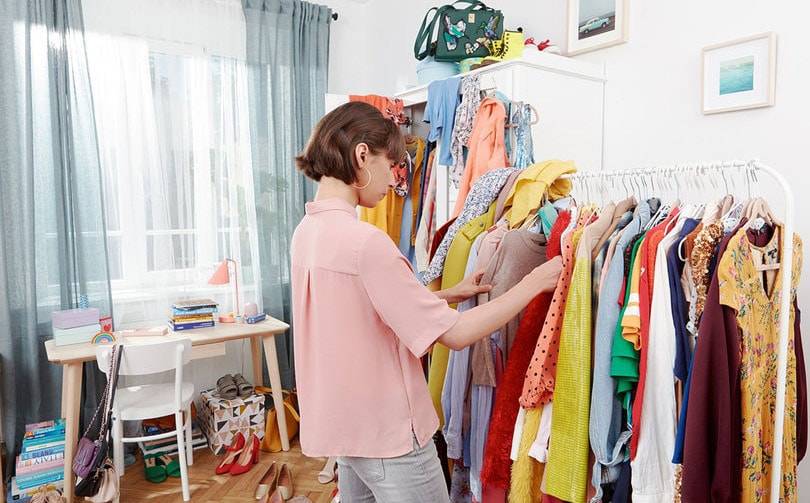The fashion industry has always been about embracing the newest innovations. Whether it is the signature cuts and silhouettes of Vivienne Westwood or the Avant-garde style of Jacquemus, the fashion industry is no stranger to changing trends. And now it’s time for the union of fashion and technology.
Social media is altering how fashion is consumed and has let consumers look for instant access to the latest trends fresh off the runways. Also, the younger generations are seeking products that can be tailored to their preferences. Moreover, the mass production of clothing, as we know it, seems to be gradually losing its appeal.
As the lives of consumers become increasingly connected with the digital world, designers and brands must adopt the latest technologies. This will help push the limits of manufacturing, production, marketing and wearability within the fashion sector. On that note, here are a few ways technology is influencing fashion.
- Contributing to sustainability
Sustainability and technology may seem somewhat like an oxymoron. But technology assumes a significant role in letting the fashion industry become more sustainable rather than being energy-exhaustive.
The carbon footprint generated owing to the increased use of raw materials, clothing construction, textile manufacturing, shipping, and then retailing is huge. However, there’s a conscious shift in how fashion is consumed which is forcing this sector to become more sustainable by being slower.
In fact, some of the biggest high-street fashion brands have already jumped into the bandwagon to design entire new lines keeping sustainability in mind. In 2019, it was reported that the new spring-summer collection of H&M collection will use a fabric known as Pinatex. It’s a leather-like material made from pineapple leaves. Around the same time, Levi’s also started using hemp in their new line of sustainable clothing to make them easily recyclable.
- Emphasis on the Internet of things (IoT)
It’s true that fashion has made great strides to improve how to wear clothes in our everyday lives. The latest advancements in apparel technology and wearable gadgets have redefined how we experience our surroundings, connect with others and our bodies, giving new meaning to the word comfort.
Smart clothing, multi-functional designs and responsive sportswear have witnessed substantial development in recent years. And as our “real” lives merge with virtual existence, many designers have been pushing the limits of wearability.
The widespread expansion of technology has impacted retail businesses in many ways. The Internet of Things (IoT) allows data sharing, security, inventory management, and increased efficiency. Many retail businesses employ IoT in improving their consumer experience. “This may involve apparel with digital capabilities, like smart clothing, multi-functional designs, responsive sportswear and more”, opine John Hannigan, an paper writing help expert associated with Allessaywriter.com. For instance, Google has already initiated a smart clothing technology known as Jacquard.
- The application of virtual and augmented reality
Bringing together the physical and virtual worlds of retail has been one of the most exciting applications of Virtual Reality in fashion. In this case, it has become a common practice among various eCommerce sites to let consumers try on outfits virtually with high accuracy. Such features include customised measurements functionality that requires augmented reality technology.
Moreover, this type of online shopping experience helps retain the clients longer as they are entertained seeing the product on themselves before buying. In a way, they’re styling themselves. This along with the social media share factor makes the feature more intriguing.
Selling digital clothing is growing in popularity as well. For instance, Louis Vuitton designed clothes for the League of Legends characters and sold digitised versions of it. In 2019, Ralph Lauren collaborated with Bitmoji where consumers can create their own Bitmoji look with the new mix-and-match wardrobe from Polo Ralph Lauren.
- Mobile commerce
Mobile technology is bigger than ever now. It has not only impacted our everyday lives but also become one of the fastest-growing means of consumption (be it content or fashion). This is because using our smartphones for shopping online is like a piece of cake now. With various digital wallet options, constantly innovating with promising technologies like facial and fingerprint recognition, they’re poised to be the preferred payment for retail purchases.
Amidst this growth of mobile eCommerce, social media is also included in the mix (like Instagram’s shopping feature). This means brands can be present in their customers’ favourite channels with an integrated digital commerce offering. This offers brands with greater visibility and presents them with more opportunities to make a sale.
- Fast data analysis for quick adoption
The Internet has introduced new software tools on the market, which allow brands and factories to receive real-time feedback from companies about defects or damaged goods. This assists the brands to save money, limit wastage and present adequate products at the right time.
There are also other kinds of software that operate in a different manner. For instance, the popularity of cloud computing has opened new avenues for collaborative work, letting factories and companies work together from any parts of the world at the same time. This ensures the distribution and access to relevant data, making for a faster and more effective method of communicating.
- More widespread implementation of artificial intelligence
In recent times, fashion brands have been using AI to enhance their clients’ shopping experience, boost sales, interpret data, predict trends and so on.
For example, touchscreens and chatbots are being used in stores to improve consumer experience and customised product suggestions. The technology behind it involves algorithms that closely monitor the buyers’ journeys to find them the right products.
Even though these customer service tools are appealing, supply chain management and trend forecasting are the most profitable avenues for AI. For example, inventory tracking in real-time has become significant for brands as they save time and ensures proper warehouse management and operations.
- Focus on 3D Printing
Since the introduction of 3D printers, many fashion brands, both big and small, have been looking into its possibilities. It could be helpful for catering to on-demand production, and creating new alternatives for customisation, sustainability and creativity. Many fashion brands have adopted 3D in their collections in 2020.
Even though it takes many hours to create, it leads to less wastage and proves far less labour-intensive than other kinds of manufacturing. This minimal waste approach could offer interesting insights on how to redefine the present state of factories and maintain the sustainable, social and environmental focus.
In fact, digital knitting has also been adopted increasingly in 3D printing and providing a myriad of possibilities for customisation.
Wrapping it up
From all the interesting insights, it’s safe to assume that the future of fashion indeed looks promising. Now, it remains to be seen how these technologies help in the evolution of fashion in the coming years.

